Physics
Fox
Summary
- We live on a planet called Earth.
- Beyond Earth, there is space. (also known as outer space).

- The part of physics that studies things in space is called astronomy.

- Over the next few pages, we will journey further and further away from Earth, where we’ll learn about the Solar System, the stars, the galaxies, and the Universe.
Do you realise
We're floating in space?
When you look up at night, what do you see?

Probably a ceiling. Fair enough, it is cold out at night.
But what would you see if you were outside?
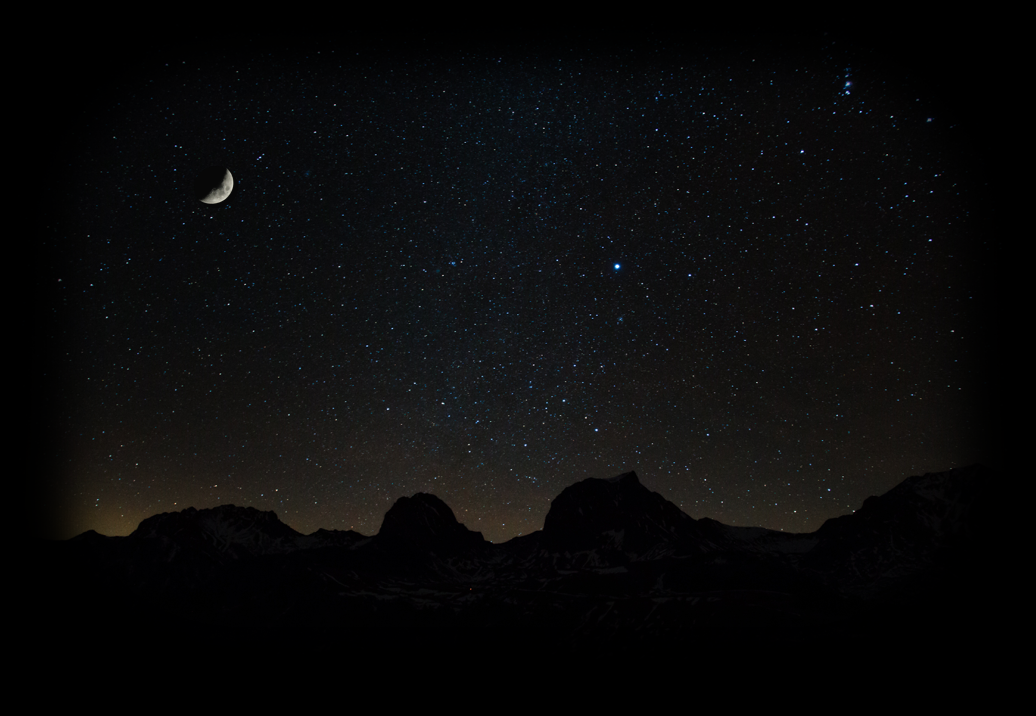
You’d see lots of little bright dots, and maybe the moon. And lots of nothing.
This nothing is called space. It’s called that because it’s full of, well, space. There’s not much there!
However, there are many incredible things within space. We just have to zoom out a bit to see it.
Where are we?
We live on a planet called Earth. The Earth has one moon orbiting it, which we have imaginatively named The Moon.
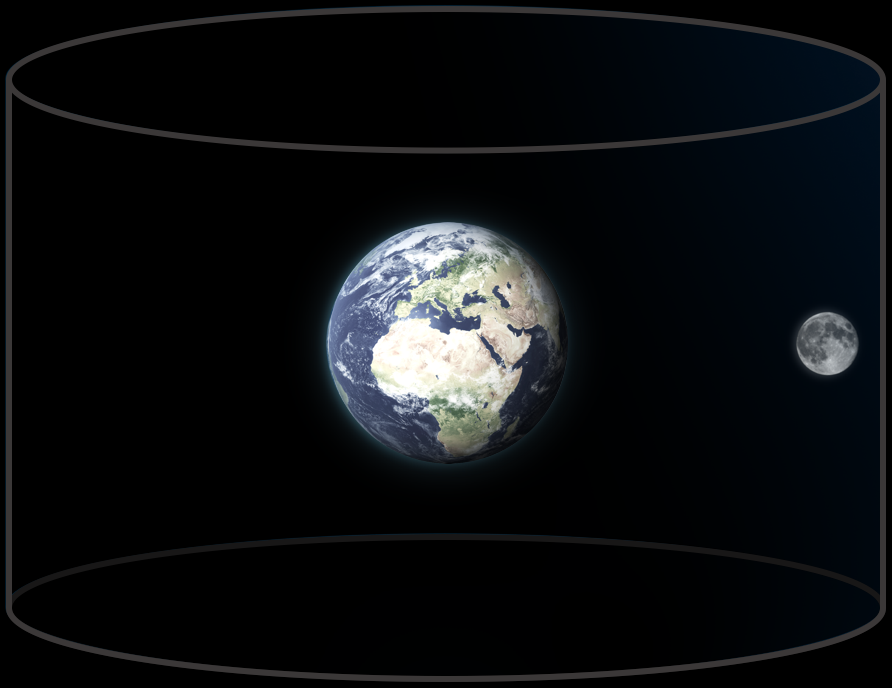
Image credit: Andrew Z. Colvin
Where is the Earth?
The Earth orbits around the Sun, our nearest star. There are seven other planets that orbit the sun, as well as many smaller objects such as asteroids and comets. The Sun and everything that orbits it is collectively known as as the solar system.

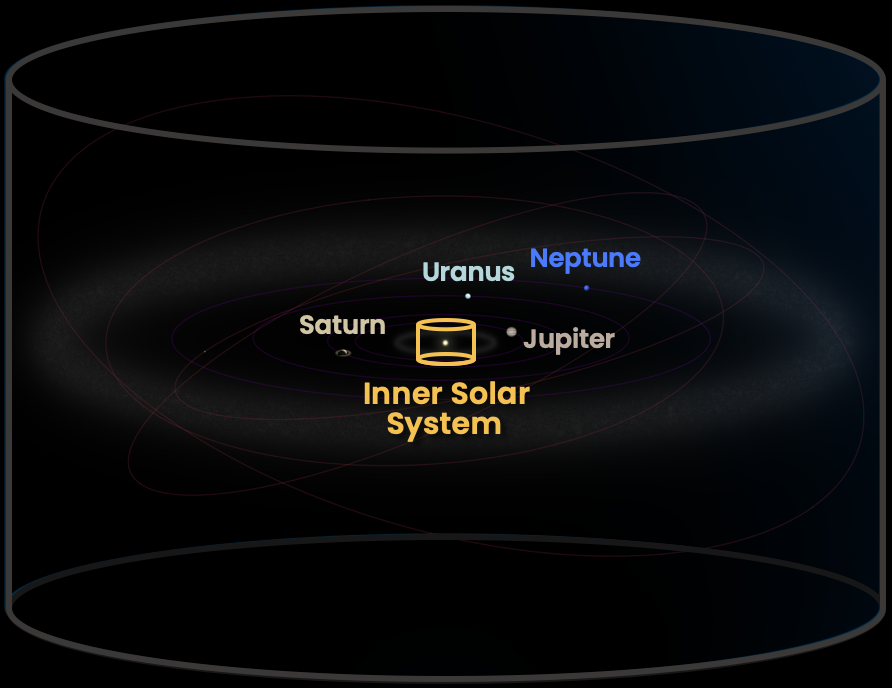
Where is the Solar System?
Beyond the solar system, we find other stars. Many of these stars have planets of their own. Whether there is life on other planets (or moons) is currently unknown.

All of the stars we see in the sky (as well as many more that are too far away to see) are part of the Milky Way galaxy. A galaxy is a huge collection of stars — the smallest galaxies contain hundreds of millions of stars, and the biggest have a million times more!

Galaxies, including the Milky Way, are often in the shape of a big disk. These disks are spinning — it takes our solar system 230 million years to go round the disk once!
Many galaxies (such as our own) contain a supermassive black hole in the centre. The region near a black hole has such a strong gravitational pull that anything there is doomed to be sucked into the black hole.
Where is the Milky Way?
The Milky Way is part of a small group of galaxies called The Local Group.

The Local Group is itself part of an enormous supercluster of over 100,000 galaxies, called the Laniakea Supercluster.
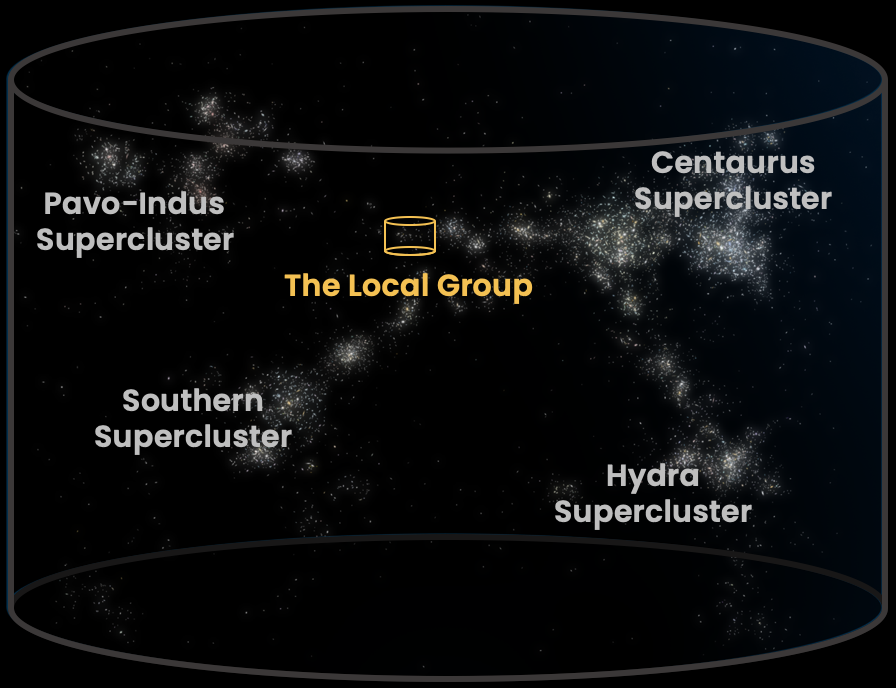
Where is the Laniakea Supercluster?
The Laniakea Supercluster is part of a massive ‘wall’ of galaxy clusters that is over a billion light-years long. This wall is known as the Pisces–Cetus Supercluster Complex (a name that just rolls off the tongue).

Galaxy walls (also known as galaxy filaments) are the largest things in the Universe. Together, many galaxy walls form a huge web over the entire universe.
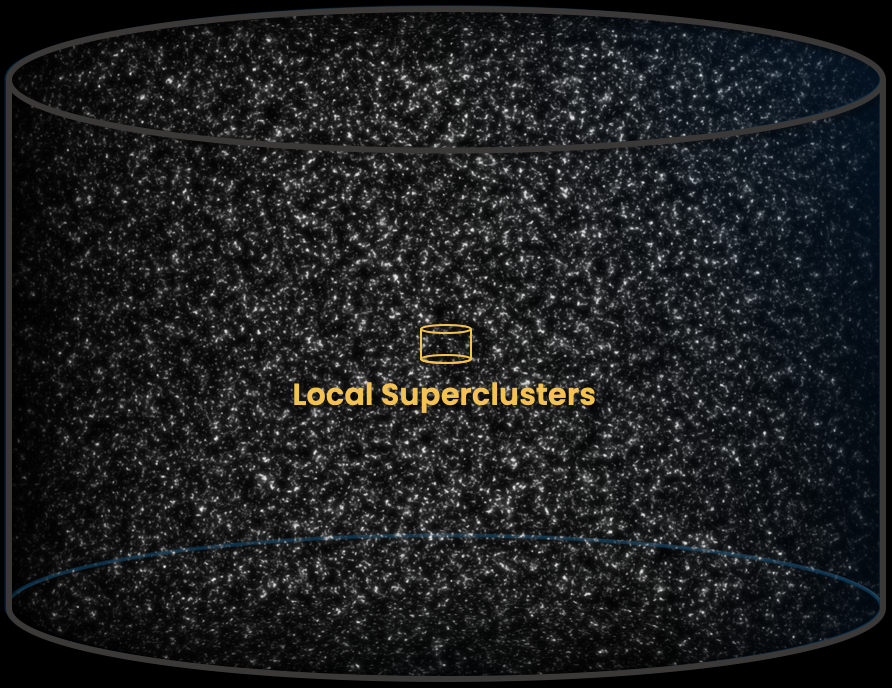
Where is the Universe?
As far as we know, the Universe contains everything that exists. However, some have hypothesised the existence of other universes outside our own. Together, our universe and the other universes would be known as the multiverse.
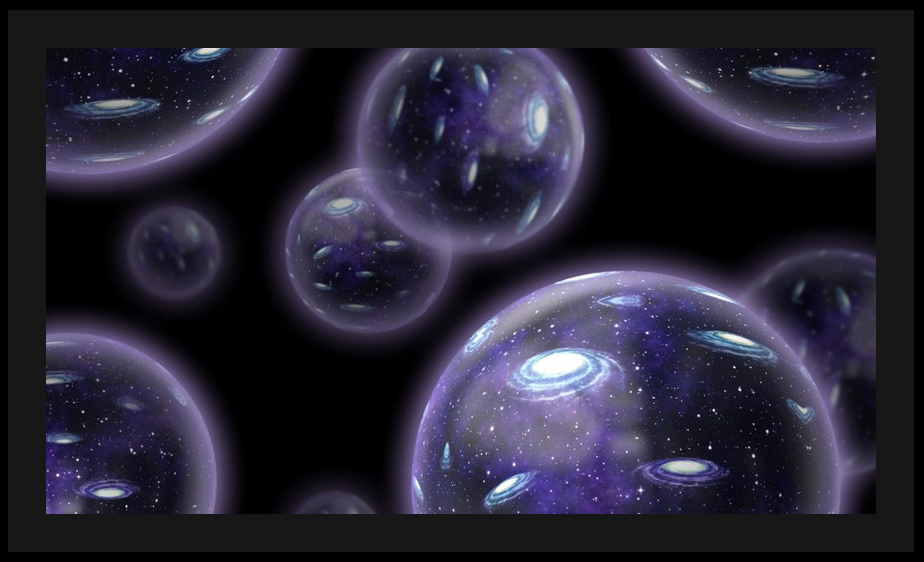
In summary, if you were expecting intergalactic mail, your postal address would be:
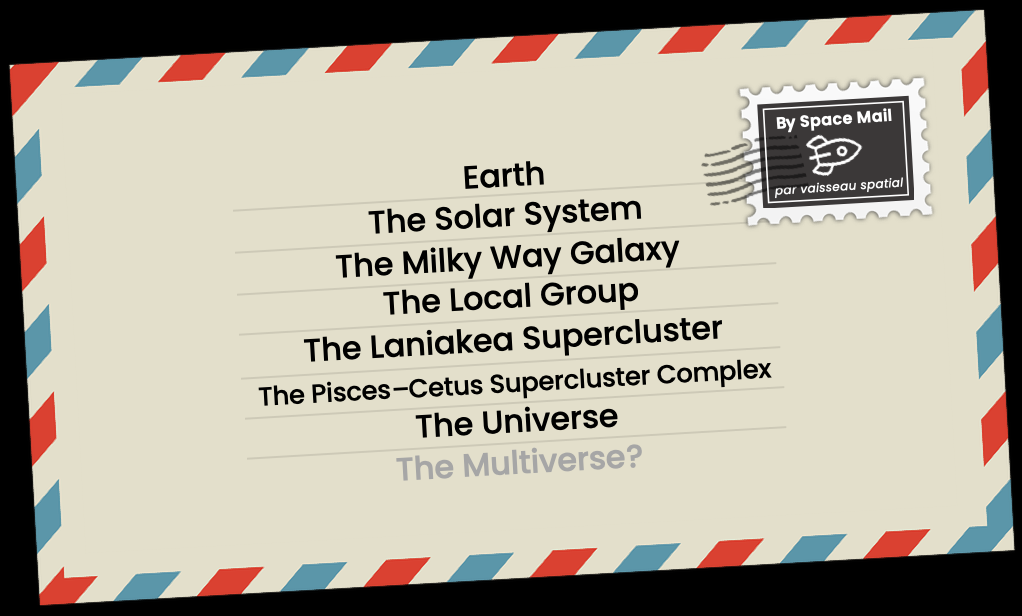
The part of physics that studies the matter we find in space (such as planets, stars and galaxies) is called astronomy. It is also known as astrophysics.
Astronomy is very different from astrology, which is the belief that the positions of stars and planets can influence our personalities and moods.
Like opening fortune cookies, astrology can be fun — but unfortunately none of it is actually true. That’s fine though, astronomy is more interesting anyway!
Not quite. What appears to be empty space actually contains:
- Occasional atoms of hydrogen or helium (In the solar system, there are about about 20 atoms for every sugar-cube-sized region of space).
- Cosmic dust – Tiny pieces of solid matter. A large amount of cosmic dust and hydrogen/helium gas is one place is called a nebula. In a nebula, the dust and gas clumps together because of gravity, forming new stars and planets.
(The amount of cosmic dust depends on where you are in space. In the Solar System there is just 1 dust grain for every Pyramid-of-Giza-sized region of space.)
Photo credit: NASA, ESA, the Hubble Heritage Team - Light — you wouldn’t be able to see stars if there was no starlight going through space!
- Neutrinos – Tiny, fast-moving particles that pass through practically everything they meet. About 100 trillion neutrinos pass through your body every second!
- Fields — These include the magnetic field and the gravitational field.
- Virtual particles — Particles that come in and out of existence over a very short period of time.
Congratulations!
3 of 3 questions completed
+ ⭐️ collected.
Sign up (for free!) to:
• save your progress 📊
• create constellations✨
• customise your fox! 🦊







